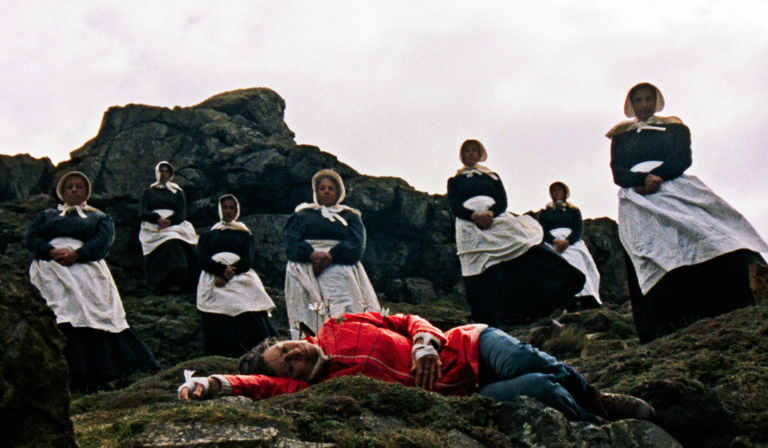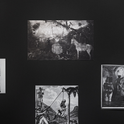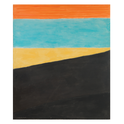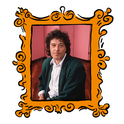“Cornwall’s ancient history seeps into the blood and bone of all of us raised down here,” says Jane Johnson. She lives in the far west of the county, from where she works as both a writer and a publishing director for HarperCollins.
Cornwall—still known by many by its traditional name, Kernow—has always drawn artists with a penchant for the mysterious. Its dramatic coastline has formed the backdrop for many a dark tale on page and screen, from the gothic splendour of Daphne du Maurier to the violent psychological terror of Sam Peckinpah’s Straw Dogs (1971) to the out-and-out Hammer horror of Plague of the Zombies (1966).
But Cornish horror is having something of a moment again, with new works taking as their inspiration the folklore, myths and legends that imbue the landscape.
“We love our weird customs and woo-woo ways down here,” says Johnson. Her 2022 novel The White Hare is, she says, “a full-on Cornish gothic novel, with a tip of the hat to Du Maurier and every tale about vengeful nature deities ever written”. Her latest, which came out in June, is Secrets of the Bees and incorporates Ol’ Penglaz, the Cornish version of the eerie Welsh tradition of the Mari Lwyd, a horse-skull draped in robes carried from house to house in midwinter.
The current crop of Cornish folk horror explores the myriad myths of the county; and, like all good horror fiction, it isn’t really about the scary thing that’s front and centre, but instead uses the strange to explore the familiar—grief, loss, love and longing.
Like Johnson, Ronnie Turner has a foot in two bookish camps. She’s a writer whose latest novel, Small Fires, involves two sisters fleeing their Cornish home after a tragedy and escaping to a Scottish island. But she’s also a bookseller, working in the Truro branch of Waterstones, so is well placed to see the rising popularity of the genre.
“There has been such a rise in folk horror recently in publishing, and it is a joy to see,” she says. “Stories set in Cornwall, like Sam Horton’s Gorse and Jodie Matthews’s Meet Me at the Surface are hugely popular. I think Cornwall lends itself so well to this trend because it is full of stories. And nothing draws storytellers better than the curious, the mysterious, the gothic and peculiar. Cornwall is a cornucopia. A reserve of raw inspiration.”
Gorse and Meet Me at the Surface, both name-checked by Turner, are two of 2025’s Cornish folk horror standouts, along with Small Fires. Cornwall-born Matthews fictionalised much of the landscape of her youth in Blisland, near Bodmin Moor, for her novel about a young woman coming home after the death of a childhood friend. “Growing up on the edge of the moor meant I grew up with folklore and a sense of the mythical aspect of the landscape,” she explains. “Frequent walks across the moor meant that stories, both made up on the spot and based in folklore, were commonly told.”
Folk horror in general is hugely popular at the moment. Its mainstream exemplars are two movies almost half a century apart: Robin Hardy’s The Wicker Man (1973) and Ari Aster’s Midsommar (2019), both of which feature an outsider coming into an isolated, pagan community—with horrifying results.
‘Folk horror uses elements of folklore, pagan tradition, superstition and rural isolation to create a sense of dread and unease’
Turner says, “Many readers hear the word ‘horror’ and think of vampires and werewolves, but folk horror is very different. It utilises elements of folklore, pagan tradition, superstition and rural isolation to create a sense of dread and unease. It is very human and very evocative.”
While Turner and Matthews have set their folk horrors in the contemporary world, Horton’s Gorse takes place in an 18th-century Cornwall where the land of faerie interacts with the human world. He moved to the county eight years ago, which kickstarted his writing career.
“I didn’t really write before I came here,” he says. “I’d always read, loved it, and had a vague dream of doing it—but in the same way you might dream of going to space. When I moved, looking for a way to get to know my new home, I walked my dog across the moors. Soon I had the idea to create a fictional island that I’d create visual ‘artefacts’ for. A way for people to explore Cornwall from a safe distance. I mapped it and made documents and, along the way, I read a great deal of folklore. I loved how it tied to place, landscape and history.”
What is it about Cornwall that goes hand in hand with folk horror? “Cornwall has a rich cultural history. It’s a place that will always breed writers, call writers to it and be written about,” observes Matthews. “I think the recent trend of folk horror comes from writers wanting to showcase a different side to Cornwall than we might have seen before—yes, it’s a beautiful place, but it can also be a troubled, isolated place too.”
For Horton, a relative newcomer, it’s somewhere that has held on to its traditions where others have let them slide. “Cornwall, because of its hugely rural and isolated position, until fairly recently, also maintained an independent oral tradition for longer than other parts of the country,” he says. “At one point, every county would have been connected to its folk tales, but I think that the industrialisation and increased connectivity of ‘up country’ meant that those stories were often homogenised, whereas down here they were preserved.
“I think the landscape, especially the moor, is very conducive to folklore and storytelling. You can literally touch the stories. The stacks of rock, stone circles and ancient sites are a tangible link to a past so ancient it’s all we can do to speak to it.”












